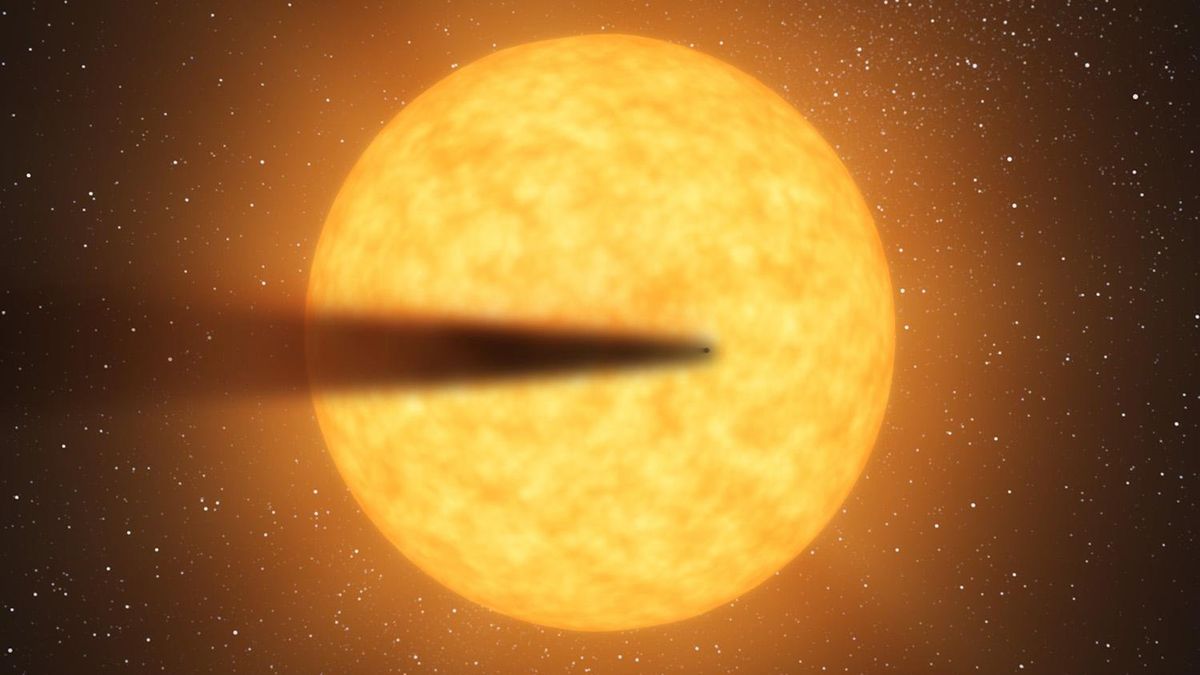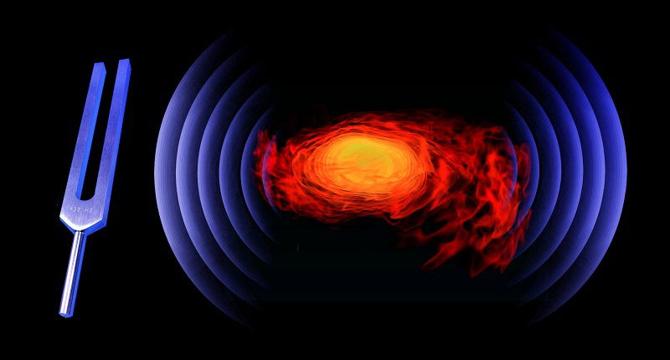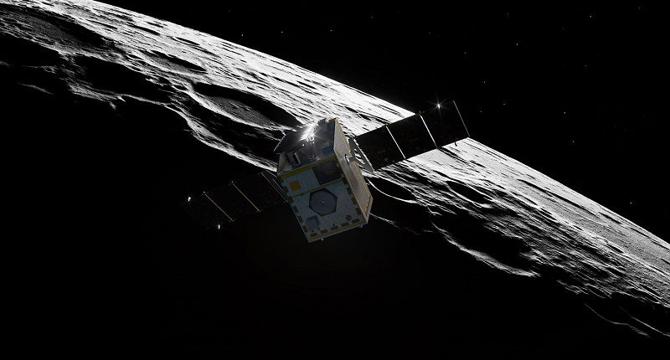Space News
Livescience
223

Image Credit: Livescience
'Utterly cataclysmic': James Webb telescope spots 2 alien planets disintegrating before our eyes
- Astronomers have directly observed two exoplanets shedding their outer layers into space for the first time.
- The first exoplanet, K2-22b, is a Neptune-size rocky world with temperatures that can melt and vaporize rock.
- The second exoplanet, BD+054868Ab, has two massive tails and is losing a moon's worth of material every million years.
- The findings provide valuable insights into the composition and behavior of exoplanets.
Read Full Article
13 Likes
Earthsky
13

Image Credit: Earthsky
New lunar lander Athena launches to the moon today
- The lunar lander Athena, Intuitive Machines' newest mission to the moon, is ready to launch today.
- Athena will be launched on a SpaceX Falcon 9 rocket from the Kennedy Space Center in Florida.
- The goal of the Athena mission is to demonstrate lunar mobility, resource prospecting, and analysis of volatile substances from subsurface materials, with the aim of uncovering water sources beyond Earth.
- Athena is expected to take about one week to reach the moon.
Read Full Article
Like
Earthsky
59

Image Credit: Earthsky
Get an exclusive peek inside NASA’s Vehicle Assembly Building
- NASA’s Vehicle Assembly Building (VAB) is the largest single-story building in the world and one of the largest buildings in the world by volume.
- It covers eight acres (32,000 square meters) and is 525 feet (160 meters) tall and 518 feet (157 meters) wide.
- The VAB is where engineers stack the rockets before rolling them out to the launch pad.
- Artemis 2, the U.S. mission to return humans to the moon, was captured inside the VAB.
Read Full Article
3 Likes
Knowridge
241

Image Credit: Knowridge
Neutron star collisions could reveal their deepest secrets
- Scientists have discovered a new way to study the mysterious interiors of neutron stars by listening to the “pure tone” they produce after a collision.
- The signal, known as the “long ringdown”, could provide important clues about what neutron stars are made of.
- The long ringdown signal is closely linked to the “equation of state” that describes how matter behaves at extreme densities.
- Analyzing the long ringdown could greatly reduce uncertainty about the equation of state, helping scientists understand matter under extreme conditions.
Read Full Article
14 Likes
Discover more
Earthsky
86

Image Credit: Earthsky
Wild fish can recognize unique humans with visual cues
- Wild fish have been shown to recognize human divers with visual cues from their dive gear, as demonstrated by experiments conducted by the Max Planck Institute of Animal Behavior.
- In the study, fish were trained to follow a specific diver who provided food rewards, and they could distinguish this diver from another without food based on visual cues.
- When divers wore identical gear, fish were unable to differentiate between them, highlighting the importance of visual cues from diving equipment for recognition.
- The experiments were carried out in the Mediterranean Sea, where researchers observed the ability of wild fish like saddled sea bream and black sea bream to recognize and follow specific divers.
- Lead author Maëlan Tomasek noted that previous evidence on fish recognizing humans is limited, with intriguing studies like one showing a captive archerfish distinguishing human faces.
- The study found that fish followed divers based on color differences in their gear, indicating that visual cues play a significant role in how fish identify individuals.
- The researchers also named some fish with unique features that participated in the experiments, showing that these fish could learn to associate specific divers with food rewards.
- The inability of fish to differentiate between divers in identical gear emphasized the reliance on visual cues, such as patches of color on divers' bodies, for recognition.
- Overall, the study underscores the capability of wild fish to recognize and distinguish individual divers based on visual cues from their dive gear.
Read Full Article
5 Likes
Hackaday
22

Image Credit: Hackaday
DIY Open-Source Star Tracker Gets You Those Great Night Shots
- Frustrated with the lack of affordable, open-source portable trackers, OG-star-tech designed their own.
- A star tracker is a hardware-assisted camera holder that cancels out the effects of Earth's rotation for stable long-exposure astrophotography.
- OG-star-tech's design offers modular features and is available as a kit or assembled unit for purchase.
- The project aims to make astrophotography more accessible and enjoyable for people interested in capturing the night sky.
Read Full Article
1 Like
Digitaltrends
205

Image Credit: Digitaltrends
Watch SpaceX’s cinematic trailer for Friday’s Starship rocket launch
- SpaceX is preparing for the eighth flight test of its Starship megarocket on Friday.
- The company has shared a cinematic look at the Starship’s most recent flight test.
- The upcoming test will involve the impressive 'catch' maneuver to secure the Super Heavy booster.
- SpaceX aims to use the Starship for crew and cargo missions to the moon and Mars.
Read Full Article
12 Likes
Digitaltrends
127

Image Credit: Digitaltrends
How to view a rare astronomical phenomenon on Friday
- This Friday, a rare astronomical phenomenon will occur where Venus, Mars, Jupiter, Uranus, Mercury, Saturn, and Neptune will all appear in the night sky.
- The planetary alignment is a visual phenomenon as the planets remain separated by millions or billions of kilometers in space.
- To view the planetary parade on February 28, go to a dark area away from light pollution with a clear view of the horizon and wait for your eyes to adjust to the darkness.
- While Venus, Mars, Jupiter, and Uranus can be seen with the naked eye, binoculars or a telescope will greatly enhance the viewing experience. Binoculars or a telescope are recommended for viewing Mercury, Saturn, and Neptune.
Read Full Article
7 Likes
Knowridge
178

Image Credit: Knowridge
Lunar Trailblazer: NASA’s new mission to find water on the moon
- A new NASA mission called Lunar Trailblazer is heading to the moon to search for water!
- The mission aims to create a detailed map of water sources on the moon, particularly at the South Pole.
- The Lunar Trailblazer spacecraft will use instruments like the Lunar Thermal Mapper to measure temperature and analyze minerals to confirm the presence of water.
- The mission is part of NASA's Small Innovative Missions for Planetary Exploration program and will take about four to seven months to reach its final orbit.
Read Full Article
10 Likes
Universe Today
214

Image Credit: Universe Today
A New Explanation for Why Mars is Red
- Researchers suggest that Mars' characteristic red color is due to a chemical called ferrihydrite, indicating the planet was once covered in water.
- Mars, the fourth planet from the Sun, has a thin atmosphere and features volcanoes, canyons, and evidence of ancient rivers and lakes.
- The red color of Mars has been observed and recorded throughout history, and the belief that it was caused by rust-like materials is challenged by recent research.
- The discovery of ferrihydrite in Martian dust suggests the existence of cooler, wet conditions on Mars in the past, enhancing the possibility of past habitability.
Read Full Article
12 Likes
Nasa
27

Image Credit: Nasa
Sols 4461-4463: Salty Salton Sea?
- NASA's Mars rover Curiosity has been exploring the sulfate-bearing unit and has detected minerals and elemental concentrations consistent with the presence of various salts.
- In a recent plan, Curiosity will analyze rock targets named "Salton Sea", "Wellman Divide", "Goodykoontz", and "Paseo del Mar" to determine the presence of salty minerals.
- Curiosity will also document the layers of rock in buttes and mesas through imaging, which will help with interpretation when encountered on the ground.
- The atmospheric scientists have planned coordinated observations to measure argon and oxygen, as well as standard atmospheric monitoring activities.
Read Full Article
1 Like
Nasa
187

Image Credit: Nasa
NASA Names Stephen Koerner as Acting Director of Johnson Space Center
- NASA has named Stephen Koerner as the acting director of Johnson Space Center.
- Koerner previously served as Johnson's deputy director.
- He has an accomplished career in human spaceflight and has held various executive roles at Johnson Space Center.
- Koerner is recognized for his technical achievements and leadership.
Read Full Article
11 Likes
Nasa
388

Image Credit: Nasa
NASA’s X-59 Completes Electromagnetic Testing
- NASA's X-59 research aircraft has completed electromagnetic testing at Lockheed Martin Skunk Works in California, ensuring its systems work together safely without interference.
- The testing focused on internal electronic systems to prevent disruptions in critical operations caused by electromagnetic interference.
- The X-59 aims to fly faster than the speed of sound, reducing sonic booms to quieter thumps as part of NASA's Quesst mission.
- Engine tests were recently completed as the aircraft progresses through ground tests for safety and performance.
- Electromagnetic interference testing also examined landing gear and fuel switch shutoff functionality to ensure proper system operation.
- NASA conducted proximity tests between the X-59 and F-15D aircraft to gather shock wave measurements, confirming compatibility and safety.
- Data from the X-59 during testing was transmitted to NASA's control facility to monitor for anomalies before in-flight operations.
- Following electromagnetic testing, the X-59 will proceed to aluminum bird tests, taxi tests, and eventually its first flight.
- The X-59's successful electromagnetic testing brings it one step closer to demonstrating quiet supersonic technology for commercial supersonic travel.
- The completion of these tests on the ground reduces risks and ensures system performance and compatibility before airborne operations.
Read Full Article
23 Likes
Spaceflightnow
433

Live coverage: SpaceX to launch Intuitive Machines’ Moon lander on Falcon 9 rocket from the Kennedy Space Center
- Intuitive Machines is preparing to send its Nova-C lander, named Athena, to the Moon on a SpaceX Falcon 9 rocket from the Kennedy Space Center.
- The mission, scheduled for March 6, aims to last 10 Earth days and is part of NASA's Commercial Lunar Payload Services Program.
- The company received over $62 million from NASA to transport two science payloads to the lunar surface.
- Intuitive Machines is optimistic about the upcoming mission, building on lessons learned from its previous lunar mission - IM-1.
- The new mission will land at Mons Mouton near the Moon's South Pole, with a strategic importance regarding national interests.
- Athena will carry various payloads, including cameras for public images and instruments to examine the lunar regolith for volatiles gases and water ice.
- The mission also includes commercial payloads like rovers, a lunar surface communications system, and a tech demonstration for future Moon explorations.
- Intuitive Machines will deploy a rocket-propelled drone named Grace to extend exploratory reach, conducting hops in challenging lunar regions.
- Grace will carry science payloads to study stable water ice deposits and lunar surface temperatures in permanently shadowed regions.
- The IM-2 mission will also host separate rideshare payloads, including NASA's Lunar Trailblazer and AstroForge's Odin spacecraft on a flyby mission to an asteroid.
Read Full Article
26 Likes
Digitaltrends
164

Image Credit: Digitaltrends
How to watch NASA launch its cosmic detective mission, SPHEREx, this weekend
- This weekend, NASA is set to launch a new astrophysics mission called SPHEREx, which aims to investigate the origins of the universe.
- The launch will take place at Space Launch Complex 4 East (SLC-4E) at Vandenberg Space Force Base in California.
- In addition to SPHEREx, the rocket will also carry a set of four small spacecraft called PUNCH to study the sun.
- The launch can be watched on NASA's YouTube page or by attending the virtual event.
Read Full Article
9 Likes
For uninterrupted reading, download the app